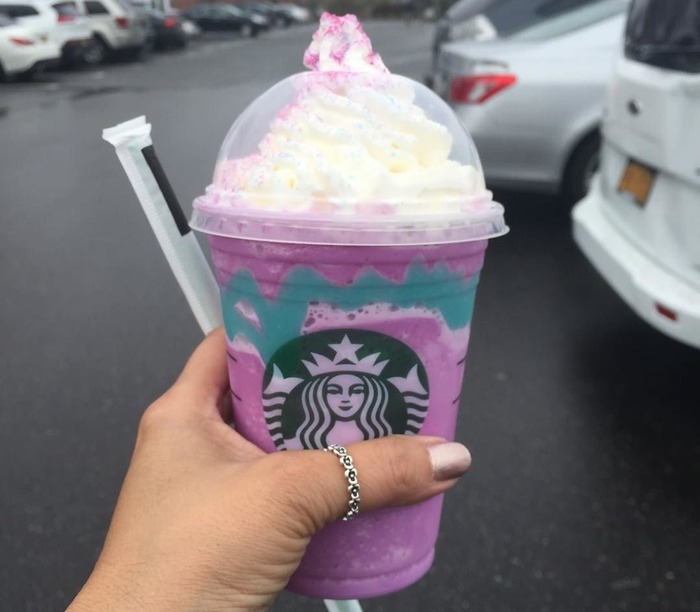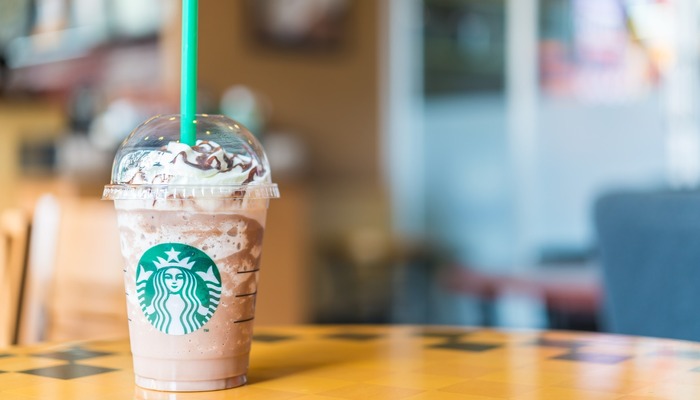This article is part of our ‘Marketing Strategies’ series, an in-depth look at how some of the world’s most successful companies promote their brand and their products.
While a competitive marketing strategy can significantly support the growth of any new company, it can be difficult for entrepreneurs to carve a unique identity for their brand in a crowded marketplace. Fortunately, many businesses offer examples of successful marketing strategies that have helped them excel in this area.
One such organisation is the US coffee giant, Starbucks. The business has leveraged a unique marketing approach to become an iconic brand, renowned for its premium coffee products and excellent customer experience. Indeed, as of February 2020, its strategy has helped the company open nearly 30,000 stores in over 70 countries worldwide, with an impressive 39.8% share of the coffee market in 2019 in the US alone.
To explore how Starbucks has achieved this, we've taken a closer look at their promotion strategy, as well as what you can do to implement these lessons in your own marketing plan.
Starbucks' Marketing Strategy
Founded in Seattle in 1971, Starbucks – one of the first US coffee house franchises at that time – quickly became known for the superior quality of its freshly-roasted, whole bean coffee. Since its establishment, the organisation has focused on a brand-centric marketing strategy, working to build and maintain a distinct identity around its optimal customer service, comfortable in-store environment, and sustainable coffee.
Starbucks continues to achieve this key marketing objective by championing social media marketing and consistently delivering digital campaigns that engage existing and new consumers; indeed, these campaigns frequently utilise user-generated content, transforming buyers into brand ambassadors.
Unique among its main competitors, Starbucks does not invest significantly in offline marketing; its non-digital promotional communication is predominantly limited to television and print advertisements. Instead, the brand places greater value in bolstering in-store features that lend themselves to positive customer experience and satisfaction – a strategy that is clearly succeeding, with reporting revenues of $26.5bn in 2019.
Customer Profile
In line with Starbucks' market positioning as a premium coffee brand, the company's demographic is typically defined as relatively high-income individuals, primarily between the ages of 25 and 54. They are educated, on-the-go, young professionals and white-collar workers who are willing to pay a premium for handcrafted coffee. Their preferences include personalised in-store interactions and purchasing options that increase buyer convenience.
Starbucks' digital marketing activities and investments support its continued market research, providing valuable customer demographic insights. Online campaign engagements, Starbucks mobile app use and buyer competition entries allow the organisation to consistently evaluate the age, location, income and predilections of its customers.
Medium
As mentioned, Starbucks prioritises its online marketing and advertising delivery, raising awareness around its products, promotions, campaigns, social impact principles, merchandise and more. In the fiscal year ending September 2019, the company utilised a global budget of around $246m to this end; here are some of the ways in which that money was spent:
Social Media Marketing
Starbucks uses social media marketing to drive its promotion strategy to consumers. Key platforms utilised throughout include Facebook, Twitter, Instagram and YouTube. In addition to organically posting content, the coffee company invests in paid social media campaigns, using its wealth of demographic data to target particular consumer groups and new audiences.
All creative content prominently displays the now-iconic Starbucks logo, a key driver of its brand recognition and brand equity, and a symbol of its premium status.
The brand also leverages this digital activity to conduct conversations with consumers, fostering closer brand-buyer relationships and contributing to successful consumer retention rates.
Consumer Advocacy
Starbucks cleverly capitalises on user-generated content in its social media marketing practices, influencing impactful consumer advocacy.
Indeed, consumers are encouraged to post photos and videos of their beverages, merchandise and experiences with the brand online. Starbucks then shares this content on its official social media pages, as well as incorporating selected consumer material in their wider marketing campaigns. Consumers whose content is utilised can feel more included in – and valued by – the company, making them more likely to make further purchasing decisions, as well as publish more Starbucks-related content in the future.
User-created content is 2.4 times more likely to be perceived by audiences as authentic, compared to content created directly by a brand. This then creates further trust between the company and potential consumers, encouraging higher sales.
In-Store Marketing
 oscarcwilliams / Deposit PhotosCustomers at a Starbucks in Redmond, WA
oscarcwilliams / Deposit PhotosCustomers at a Starbucks in Redmond, WA
To make its store locations more appealing, welcoming, and functional, Starbucks invests in a variety of in-store marketing efforts.
For instance, the brand began to offer free WiFi in all its stores in 2002, influencing consumers to stay for longer periods after their purchases, and fulfilling buyer preferences for continued connectivity.
Advertising messaging placed inside stores promote new products and loyalty scheme advantages to buyers, too, aiming to drive deeper awareness and generate further demand among existing consumers and, therefore, supporting the brand's customer retention aspirations.
Starbucks also uses the data available from its store locations to fulfil market research objectives, collecting and analysing details around customer sales, preferences and behaviour.
Competitions
Another promotional tool used online and in-store is competitions and sweepstakes. These contests typically encourage consumers to photograph and share content online relating to new store features, campaign banners, seasonal releases and the like.
This is a clever way to boost the online discussion around the brand, drive knowledge of new products, and increase traffic to Starbucks' website and social media pages. By using a dedicated hashtag to track competition entries, digital engagement becomes easier to analyse, clearly depicting how successful each sweepstake was in achieving its particular objective.
Loyalty Programmes and Mobile App Marketing
According to longstanding convention – namely, the 2001 research of Fred Reichheld of management consultancy, Bain & Company – acquiring a new customer can cost anywhere as much as five to 25 times more than retaining an existing one. This is something that Starbucks recognises, investing heavily in its loyalty programme and mobile app to facilitate customer retention.
The company released the first version of its loyalty programme in 2008 – now called Starbucks Rewards – quickly followed by the launch of its dedicated mobile application in 2009. The app's objective was to optimise consumers' end-to-end experience with the brand and allow Starbucks Rewards members to track their loyalty points and gifts easily.
Customers are encouraged to participate in the brand's loyalty scheme and download the app to be eligible for exclusive offers, order discounts, birthday gifts, and complimentary beverages.
Mobile notifications issued from the app also keep loyal users informed of any new announcements, product launches or upcoming rewards.
Finally, the addition of in-app ordering and payment options has increased the in-store convenience experienced by users, addressing modern buyers' demand for efficient service.
With high levels of personalisation supporting its marketing segmentation, Starbucks' mobile app facilitates customer loyalty and differentiation among competitors. The success of the app is evidence of this, boasting 23.4m users in the US alone.
Style
Starbucks' brand-centric marketing approach is executed across various communication channels, predominantly online. Campaigns are consistent in their content type and deployment, always working to maintain the coffee company's premium status, conveying its ethical sourcing principles, promoting its beverages, and influencing loyalty among existing customers.
This focus on maintaining its superior image – while boosting customer experience and satisfaction – has undoubtedly contributed to the steady increase of Starbucks' brand value, which was calculated at around $32.4bn globally in 2018.
Despite selling coffee-related merchandise in all store locations, the company's revenue-by-product-type indicates that its core product leads the way, with global 2019 revenues for beverages totalling around $15.9bn. This is something not lost on the company, reflected in the content focus of its primary marketing campaigns.
Key Campaign
The 2017 Starbucks Unicorn Frappuccino product campaign is an excellent example of this, also demonstrating the global coverage that Starbucks' digital campaigns garner.
For just four days in April 2017, Starbucks launched an innovative digital campaign around a new, limited-edition beverage created predominantly to drive buzz online. Named the Unicorn Frappuccino, the brightly coloured drink was designed to be both sweet and sour, changing colour from pink to purple once stirred.
 Michelle Oshen / WikimediaCustomer displaying the Unicorn Frappuccino in April 2017
Michelle Oshen / WikimediaCustomer displaying the Unicorn Frappuccino in April 2017
Rather than following the traditional digital marketing delivery route of releasing promoted banner ads online or generating awareness through its app, the company leaked attractive images of the product to social news site Reddit before its official release; immediately, this created high levels of consumer anticipation around the product. Except for light promotion through its social media channels, the company then let the media and its buyers do the rest of the work, taking advantage of the free advertising from both of these sources.
Indeed, the new beverage led to over 150,000 consumer posts displaying the hashtag #UnicornFrappuccino on Instagram, even though the drink was only available for purchase in the US, Canada and Mexico. The worldwide exposure, focusing on the aesthetically pleasing nature of the product as well as its scarcity, led to an increase in in-store footfall with consumers scrambling to get their hands on the Frappuccino before it became unavailable.
This higher footfall and sales during the period of April 19th to the 23rd allowed the company to secure new consumers, as well as recapture lost buyers, by reinforcing the brand's market positioning.
The campaign took advantage of the consumer trend of sharing photos of food and drink online, too, something that Starbucks spokespersons confirmed publicly. Indeed, entrepreneurs can take inspiration from this campaign, in particular, and understand that there is real value in making products visually exciting, as well as leveraging digital awareness generated by buyers and spectators alike.
---
Although the company can often find itself at the centre of PR disputes, Starbucks follows an exemplary marketing plan, tailored specifically to the identity and objectives of the brand. Its compelling strategy indicates how businesses can rely on consistency to maintain strong brand equity and build impressive brand value.
Indeed, rather than limiting the impact of this approach, its steady execution has made the brand renowned for particular principles and levels of quality, allowing existing and new consumers to have an accurate expectation of their in-store experiences both before and after their purchases. As a business owner, you can learn from this; evaluate the digital focus of your brand, and take inspiration from the incredible value of the awareness and demand that can be driven almost exclusively online.
In the meantime, if you still want to learn more about how the world's biggest brands sell their products and engage with audiences, then why not take a look at our breakdown of Red Bull's marketing strategy, too?
What do you think of Starbucks' marketing strategy, and what else can entrepreneurs learn from it? Let us know your thoughts and opinions in the comments below.
